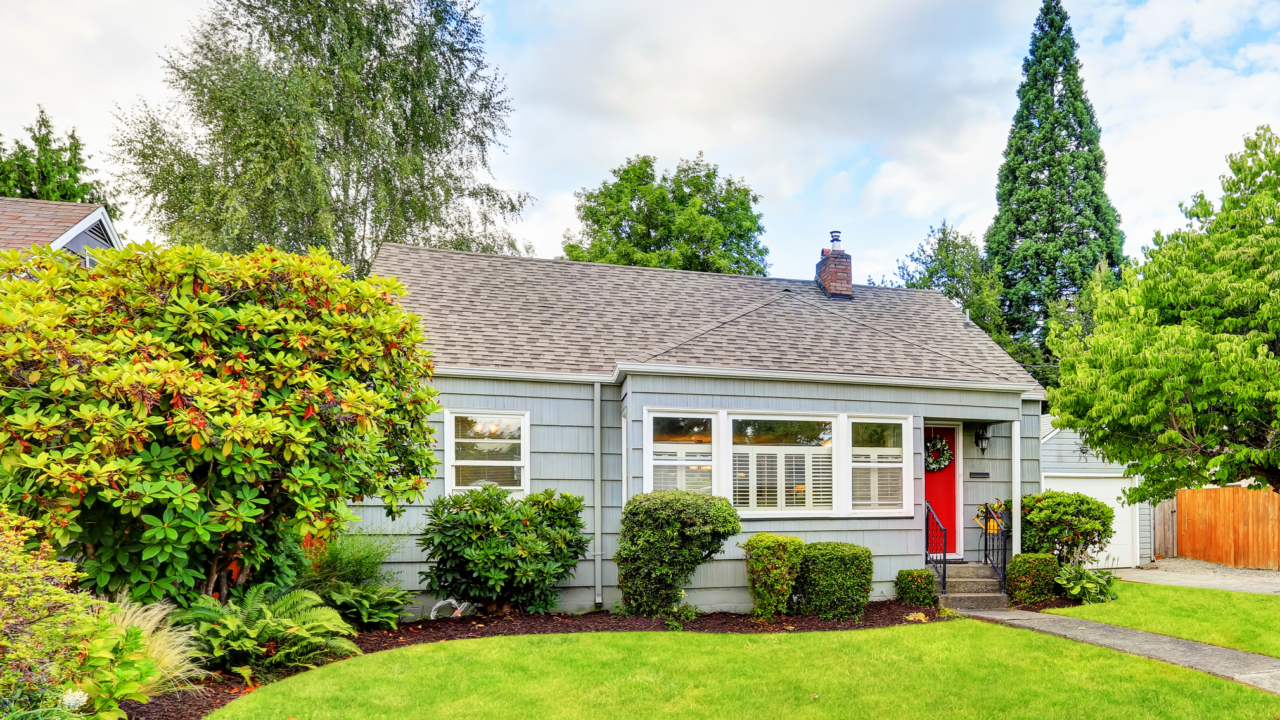What Is Mortgage Insurance and How Does It Work?


Written by Alycia Lucio on May 9, 2024
Mortgage insurance is a policy that protects the lender if you fall behind on your mortgage payments. The Federal Housing Authority (FHA) requires lenders to include a mortgage insurance premium (MIP) on all FHA loans, and Fannie Mae and Freddie Mac require private mortgage insurance (PMI) on all conventional loans that are made with a down payment of less than 20%.
FHA backed loans that require MIP and similar government guarantees make it possible for private lenders to make homeownership more accessible by reducing the credit score and down payment minimums you need in order to qualify for these government loan programs.
How does mortgage insurance work?
Mortgage insurance works by covering a portion of your loan principal in the event that you stop making mortgage payments to your lender. The two primary types of mortgage insurance are private mortgage insurance (PMI) and mortgage insurance premium (MIP — also known as FHA mortgage insurance). Both types of insurance provide lender protection. Depending on the type of mortgage loan and policy you qualify for, the mortgage insurance premium will become a part of your monthly mortgage payment, closing costs or both.
Private mortgage insurance (PMI)
When you use a conventional loan to finance a home purchase and put down less than 20%, you pay private mortgage insurance (PMI) with your monthly mortgage payment. Your lender will typically remove PMI once you hold 22% equity in the home. You can also request a cancellation of PMI when your loan-to-value ratio (LTV) reaches 80% or you hold 20% equity. The percentages are based on the original purchase price and loan amount. Some loan servicers may agree to a new home appraisal (but not always), in which case you could request a cancellation of PMI using the newly appraised value instead of the original purchase price, but you may need to refinance. In either case, the removal of PMI will lower your monthly mortgage payment.
FHA mortgage insurance (MIP)
If you qualify for a FHA loan, you’ll pay an upfront mortgage insurance premium (UFMIP) when you close on the home and a monthly mortgage insurance premium (MIP). You can roll the upfront costs into your loan balance and pay it off overtime. The monthly premiums are owed each month for the life of the loan, unless you put down 10% or more — which will allow MIP to drop off after 11 years.
Is mortgage insurance required?
Mortgage insurance is not required for all home loans but is required for FHA loans and often a requirement for conventional loan borrowers. You can think of the insurance policy as more of a condition for mortgage approval based on your financial circumstances.
Mortgage insurance is only a requirement when:
- You choose to finance your new home with a conventional loan and make a down payment of less than 20%
- You are eligible and choose to finance your new home with an FHA loan
Reminder: PMI on a conventional loan will automatically fall off your mortgage once you build up 22% equity in your home. If you meet certain criteria, you can also request to cancel it once you have 20% home equity. With FHA loans, however, your MIP will last for the life of the loan, unless you put down 10% or more.
Mortgage insurance by loan type
While PMI and MIP are the two common types of mortgage insurance, government-backed loans (like VA and USDA) include their own insurance policies for lenders that allow them to offer better loan terms and interest rates.
Here are the types of mortgage loans and their associated mortgage insurance policies:
Conventional loans
Conventional loans are the only types of home loans that require private mortgage insurance (PMI) for qualified applicants with a down payment of less than 20%.
If you’re required to pay PMI on a conventional loan, your rates will largely depend on your down payment amount and credit score. For borrowers with good credit, PMI rates are typically cheaper than FHA rates. You can also expect to pay your PMI mortgage insurance premium monthly as part of your regular mortgage payments.
FHA loans
Federal Housing Administration (FHA) loans always come with mortgage insurance premiums (MIP) that last for the life of your home loan. However, if you put down at least 10%, you can eliminate your MIP after 11 years. Until then, you’ll pay an upfront fee at closing in addition to monthly payments.
With FHA loans, your credit score also dictates your down payment. For example, credit scores between 500 and 579 require a 10% down payment, whereas scores of 580 and above may require as little as 3.5%.
USDA loans
USDA loans are backed by the U.S. Department of Agriculture and are available to borrowers looking for properties in rural areas. USDA loans don’t require a down payment and technically don’t require mortgage insurance. However, they do require you to pay an upfront guarantee fee at closing and an annual guarantee fee for the life of the home loan.
Guarantee fees essentially serve the same purpose as mortgage insurance. The upfront guarantee fee is 1% of the loan amount, and the annual guarantee fee is 0.35% of the loan amount split into equal monthly payments.
VA loans
The U.S. Department of Veteran Affairs backs VA loans for eligible veterans, military service members, and their surviving spouses. Like USDA loans, VA loans also don’t require a down payment or mortgage insurance.
However, they come with a one-time funding fee ranging from 0.5% to 3.6% of the loan amount depending on your down payment amount, loan type and service status. Like most government-backed mortgage loans, you can pay the VA funding fee at closing or combine it with your monthly mortgage payments.
How much does mortgage insurance cost?
Mortgage insurance costs can average anywhere from $13 to $208 per a month for every $100,000 borrowed. The cost of mortgage insurance depends primarily on the type of mortgage loan, your loan term, your credit score and your down payment amount. See how the cost varies between PMI on a conventional loan and MIP on an FHA loan.
PMI mortgage insurance costs
PMI costs between 0.58% to 1.85% of your principal loan amount. For example, say your loan amount is $300,000 and you qualify for a PMI rate of 0.5%, then your PMI would cost $1,500 a year or $125 a month.
Factors that impact your PMI rates:
- Credit score
- Loan term (30-year, 15-year, 10-year)
- Interest rate (Fixed or variable)
- Down payment amount
- Debt-to-income ratio
- The state you live in
MIP mortgage insurance costs
The upfront MIP cost is 1.75% of the total home loan amount, and the annual cost is around 0.55% of the loan amount on average. Annual MIP can be as low as 0.15% or as high as 0.75% depending on loan-to-value ratio (LTV) and your loan term. Say you borrow $300,000 with an upfront MIP rate of 1.75% and annual MIP rate of 0.55%, your upfront MIP would come out to $5,250 and your annual MIP would cost $1,650 or $137.50 each month. The upfront MIP costs can be paid at closing but are typically rolled into the loan amount, meaning your $300,000 loan would become a $305,250 loan.
Factors that impact the MIP rates you receive:
- Loan amount compared to the value of the property (LTV)
- Loan term (30-year or 15-year mortgage)
- Down payment if is less than 10%
To get an idea of your potential mortgage insurance rates, try our Mortgage Calculator.
How to avoid mortgage insurance
Mortgage insurance can help you reach your home buying goals if you have less than 20% of your target loan amount saved for a down payment. However, the trade-off is an extra monthly fee on top of your mortgage payment. Fortunately, there are several ways to avoid paying mortgage insurance or minimize the extra costs.
Make a larger down payment
The best way to avoid private mortgage insurance is to make a larger down payment. There are several ways you can save for a down payment, from reducing the amount you spend on nonessential purchases to asking for cash gifts that you can then use towards your down payment.
Remember that even if you can’t make the entire 20% down payment, a larger down payment will still work in your favor regarding mortgage insurance rates.
Get lender-paid PMI
For borrowers who qualify for conventional loans, lender-paid mortgage insurance (LPMI) is sometimes an option. With LPMI, the lender or loan servicer pays the mortgage insurance premiums upfront, and the borrower pays for this service monthly, usually as part of the interest rate for the life of the loan.
While lender-paid mortgage insurance (LPMI) is still mortgage insurance, it usually comes with lower monthly payments than standard PMI. This can make home loans with mortgage insurance more manageable for homebuyers who require it or an advantageous option for borrowers who are close, but not quite at, 20% down.
Apply for down payment assistance
If you’re a first-time homebuyer, you may qualify for down payment assistance. Assistance programs are typically provided by local housing authorities and non-profit organizations through grants, loans and vouchers. Down payment assistance works with most types of mortgage loans, and some lenders even offer their own programs. See how we can help you get down payment assistance.
Ask about assumable mortgages
Assumable mortgages allow homebuyers to take over a seller’s existing mortgage loan with little or no change in terms — as long as the lender approves. FHA and VA mortgages are typically assumable, whereas conventional loans are not. Check with your lender to see if an assumable mortgage is right for you and ask how it can be used to avoid the cost of mortgage insurance.
While mortgage insurance is an additional monthly cost, it can help make your homeownership dreams a reality sooner rather than later. Our loan officers are always available to answer any questions you may have about home financing. Reach out whenever you’re ready to begin shopping for a home.
How much home can you afford?
At Zillow Home Loans, we can pre-qualify you in as little as 5 minutes, with no impact to your credit score.
Zillow Home Loans, NMLS # 10287. Equal Housing Lender
Get pre-qualifiedHow much home can you afford?
See what's in reach with low down payment options, no hidden fees and step-by-step guidance from us at
Zillow Home Loans.
Zillow Home Loans, NMLS # 10287. Equal Housing Lender
Calculate your BuyAbility℠
Related Articles
Get a mortgage with Zillow Home Loans
Go from dreaming to owning with low down payment options, competitive rates and no hidden fees. A dedicated loan officer will guide you until you have your keys in hand.

Zillow Home Loans, NMLS #10287. Equal Housing Lender.



